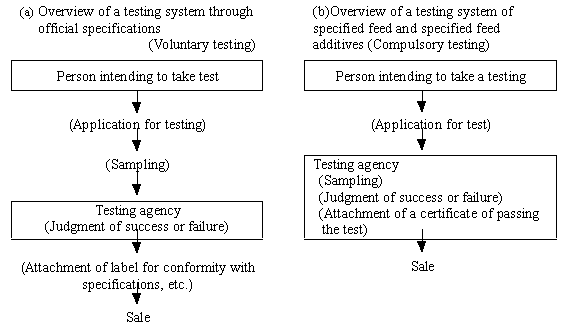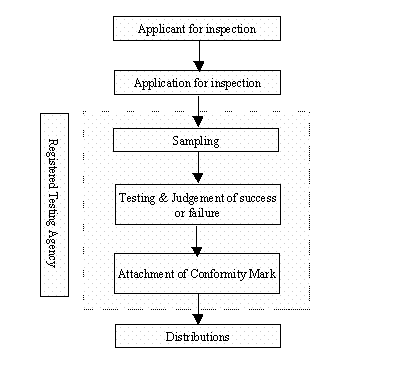

i. Registered testing agencies
| Name of the testing agency | Testing Offices | Phone number | |
| Japan Fertilizer and Feed Inspection Association | Headquarters office, JFFIA | 1-12-15 Fukuzumi, Koto-ku, Tokyo | 03-3641-3453 |
| Kansai Branch, JFFIA | 14-1 Shin-minatocho,Chuo-ku, Kobe, Hyogo | 078-332-6491 | |
| Japan Food Research Laboratories | Osaka Branch, JFRL | 3-1 Toyotsu-cho, Suita,Osaka | 06-6386-1851 |
| Tama Institute, JFRL | 6-11-10 Nagayama, Tama, Tokyo | 042-372-6711 | |
| Japan Inspection Association of Food and Food Industry Environment | Shimizu Office, JIAFE | 1-39 Hinode-machi, Shimizu-ku, Shizuoka, Shizuoka | 0543-53-0181 |
| Japan Frozen Foods Inspection Corporation | Sendai Inspection Office, JFFIC | 1-24-18 Takasago, Miyagino-ku, Sendai, Miyagi | 022-254-8991 |
| Kobe Office, JFFIC | 3-2-6 Minami-cho, Minatojima, Chuo-ku, Kobe, Hyogo | 078-857-3682 | |
| Overseas Merchandise Inspection Co., Ltd. | Tokyo Laboratories, OMIC | 6-31-5 Sagamigaoka, Zama, Kanagawa | 046-251-0748 |
| Hiyoshi, Co. | Hiyoshi Feed Inspection Center | 908, Kitanosho-machi, Omi-hachiman, Shiga | 0748-32-5001 |
ii.Flowchart for testing procedure

(5) HIGHLIGHTS OF THE RECENT AMENDMENT
To eradicate bovine spongiform encephalopathy (BSE), the use of ruminant-derived animal fat in cattle feed and the use of animal fat from cattle's spinal column and dead cattle in feed for livestock (other than cattle) has been banned, along with the system confirming compliance of the ban in the manufacturing process, in which confirmation is issued by the Minister of Agriculture, Forestry and Fisheries (May, 2004).
An importer must notice production origin, description of materials and substances of processed feeds or feed additives. Also, a feed retailer is required to submit notifications (June, 2005).
(6) REFERENCE INFORMATION
(Liaison Office for Further Information)
Animal Products Safety Division, Food Safety and Consumer Affairs Bureau,
Ministry of Agriculture, Forestry and Fisheries
Tel: 03-3502-8111(Ext. 3176) http://www.maff.go.jp